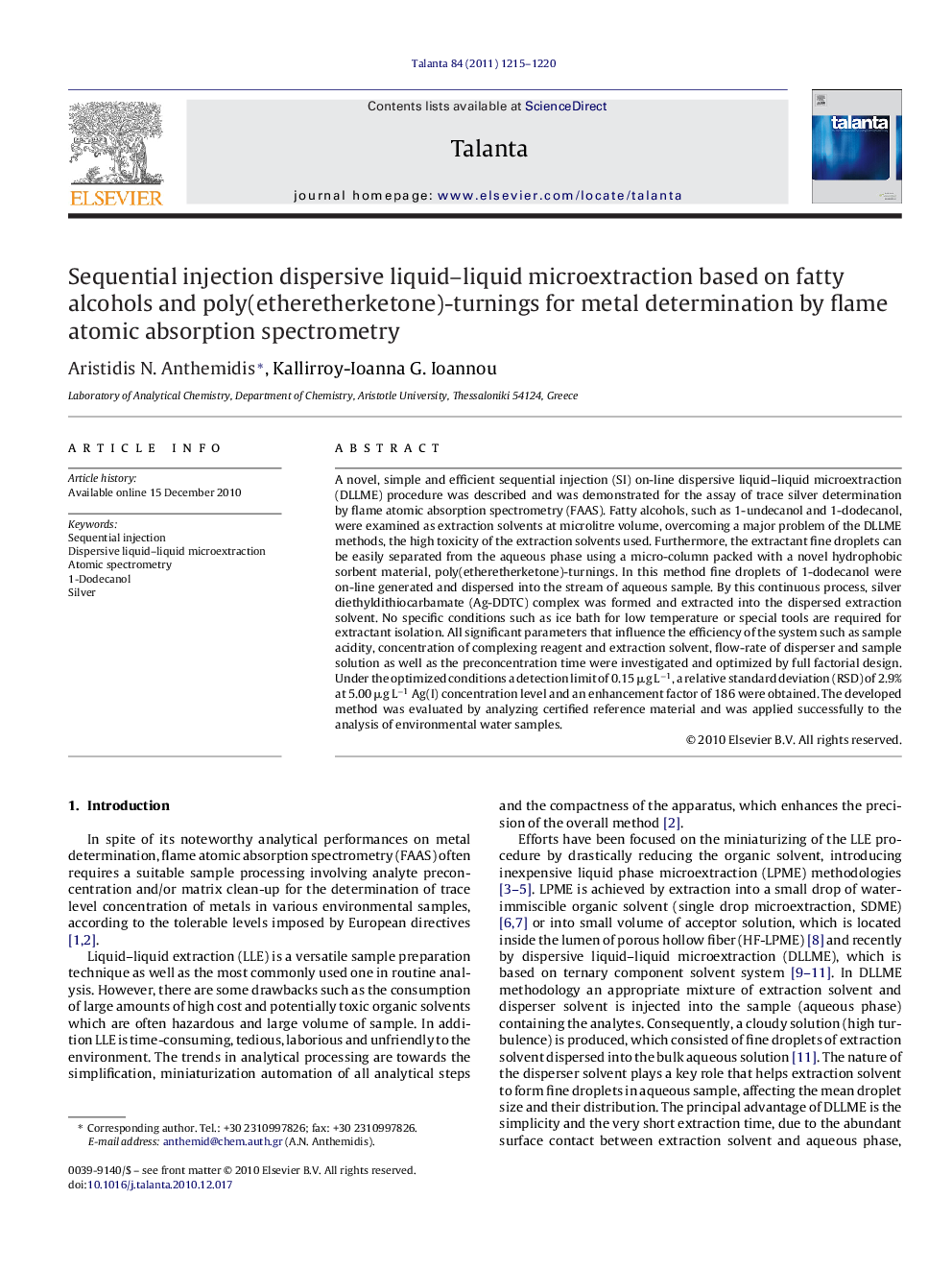| کد مقاله | کد نشریه | سال انتشار | مقاله انگلیسی | نسخه تمام متن |
|---|---|---|---|---|
| 10559867 | 969675 | 2011 | 6 صفحه PDF | دانلود رایگان |
عنوان انگلیسی مقاله ISI
Sequential injection dispersive liquid-liquid microextraction based on fatty alcohols and poly(etheretherketone)-turnings for metal determination by flame atomic absorption spectrometry
دانلود مقاله + سفارش ترجمه
دانلود مقاله ISI انگلیسی
رایگان برای ایرانیان
کلمات کلیدی
موضوعات مرتبط
مهندسی و علوم پایه
شیمی
شیمی آنالیزی یا شیمی تجزیه
پیش نمایش صفحه اول مقاله

چکیده انگلیسی
A novel, simple and efficient sequential injection (SI) on-line dispersive liquid-liquid microextraction (DLLME) procedure was described and was demonstrated for the assay of trace silver determination by flame atomic absorption spectrometry (FAAS). Fatty alcohols, such as 1-undecanol and 1-dodecanol, were examined as extraction solvents at microlitre volume, overcoming a major problem of the DLLME methods, the high toxicity of the extraction solvents used. Furthermore, the extractant fine droplets can be easily separated from the aqueous phase using a micro-column packed with a novel hydrophobic sorbent material, poly(etheretherketone)-turnings. In this method fine droplets of 1-dodecanol were on-line generated and dispersed into the stream of aqueous sample. By this continuous process, silver diethyldithiocarbamate (Ag-DDTC) complex was formed and extracted into the dispersed extraction solvent. No specific conditions such as ice bath for low temperature or special tools are required for extractant isolation. All significant parameters that influence the efficiency of the system such as sample acidity, concentration of complexing reagent and extraction solvent, flow-rate of disperser and sample solution as well as the preconcentration time were investigated and optimized by full factorial design. Under the optimized conditions a detection limit of 0.15 μg Lâ1, a relative standard deviation (RSD) of 2.9% at 5.00 μg Lâ1 Ag(I) concentration level and an enhancement factor of 186 were obtained. The developed method was evaluated by analyzing certified reference material and was applied successfully to the analysis of environmental water samples.
ناشر
Database: Elsevier - ScienceDirect (ساینس دایرکت)
Journal: Talanta - Volume 84, Issue 5, 15 June 2011, Pages 1215-1220
Journal: Talanta - Volume 84, Issue 5, 15 June 2011, Pages 1215-1220
نویسندگان
Aristidis N. Anthemidis, Kallirroy-Ioanna G. Ioannou,